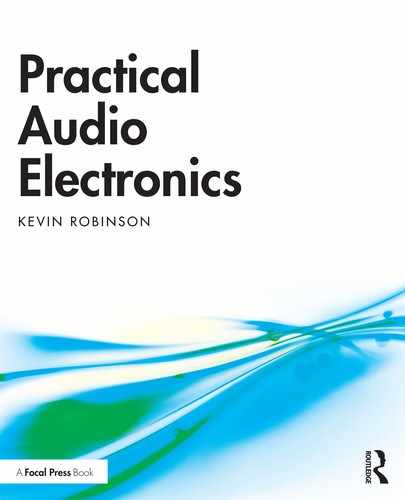1 | Introduction
This brief introductory chapter outlines the broad framework adopted for the material presented in the rest of the book, and highlights some of the important features of the text. These include a number of special ‘optional asides’ presenting more technical material apart from the main flow of the text. There are also numerous practical exercises providing the opportunity for a deepened understanding of the subject through guided practical work. The main body of the book is presented in three parts – Electrical Theory, Practical Electronics, and Component Reference – followed by a number of appendices, and closing with a bibliography and index.
Part I – Electrical Theory starts off by introducing the fundamental concepts and quantities in electricity, including voltage, current, resistance, and power. As semiconductor materials play such a key role in modern electronics, a brief introduction to these is provided, outlining the science behind their structure and operation. Later this knowledge is applied when looking at how various semiconductor devices operate. While for the most part the material in this book does not involve any work with mains power, it is well worth acquiring a basic understanding; a chapter on mains electricity and electrical safety covers the important aspects of working in this potentially hazardous environment. Part I is rounded off with a chapter on signal characteristics, providing some background to the key aspects of audio signals.
Part II – Practical Electronics looks at the most important tools of the trade and how to use them. All stages of designing, prototyping, building, and testing of audio circuits are covered. After a quick overview of common components, the drafting and interpretation of circuit diagrams is examined. Next, the primary tools and equipment used for developing and testing new circuits are described. Some simple analysis procedures are introduced to allow basic circuit behaviour to be understood and predicted, and then the hands-on activities involved in actually building circuits are addressed. Part II is concluded with a set of fully worked projects to build, including a simple battery powered amplifier, an interesting sound synthesis circuit and a useful audio effects processor – all the building blocks needed to start making some noise.
Part III – Component Reference is composed of a series of chapters detailing the most important facts and figures for all the different components likely to be encountered in audio electronic circuits, including numerous applications and circuit examples throughout. The focus is on that information which can prove most useful in understanding and working with these components, while the more obscure theory aspects are kept to a minimum.
Appendices round out the body of the book, presenting useful reference material as well as bringing together a catalogue of the most interesting circuits encountered throughout, complete with breadboard and stripboard layout designs for each, allowing them to be easily and quickly built, tested, and experimented with.
